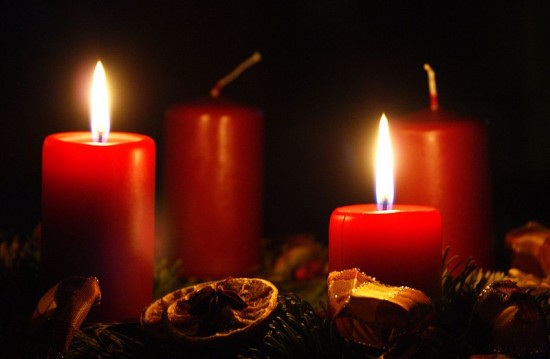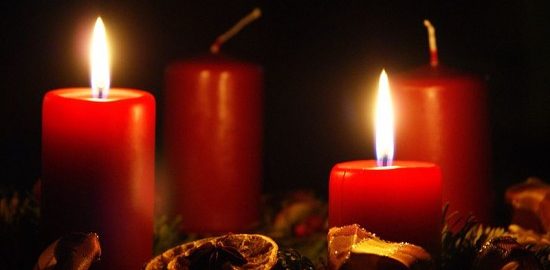A message for the second week of Advent based on Mark 1:1-8 featuring renaissance fairs, turkey legs and proclamation too.
Have you ever been to a renaissance fair? This kind of fair has become more common in the US the past two decades, I’ve got a few friends that absolutely love them.
Renaissance fairs typically aim to recreate a certain era; many are set during the reign of Queen Elizabeth of England or Henry VIII. Still others go for more of a Viking or pirate motif; I definitely see how those themes could be fun.
These events typically have a slew of costumed entertainers and fair-goers, and the outfits can get really creative, perhaps this was the original cosplay. Renaissance fairs often include musical acts, arts and crafts for sale, and festival foods galore. Personally I always go for the turkey leg, love me some of that, I get one just about every time they are available. These fairs are designed, intentionally, to blend right in with the era being replicated; going to one is akin to stepping out of a time machine that’s taken you back a few centuries.
One of my favorite parts of a good renaissance fair is the town crier competition. In these events participants, each decked out in bright, flashy costumed regalia, take turns giving a proclamation to the gathered crowd. “Here ye, here ye!” the proclamations often begin, with language dripping in old English words and phrases, not too dissimilar from what can be found in parts of the King James Bible.
The winner of these competitions is the voice that speaks the loudest, and clearest, with the most emotion, the most energy, the most life. And the winner is often made the official voice of the fair. The town crier, sometimes referred to as a herald, then proclaims the goodness that is to come, giving updates on what renaissance festivities happen next. The herald draws people in, gets them excited, gets them involved, all while giving the good news of the day.
For grins, here’s a video of a town crier, giving an important announcement, just to give you a glimpse of what we’re talking about.
Isn’t that fun? The person in the video is Tony Appleton, he’s the President of the Guild of International Millennium Town Criers, who knew such a group existed? Now Tony has a strong British accent in spots, perhaps for some, so in case you missed parts of that here is what the proclamation says.
Hear ye! Hear ye! Hear ye! On this day, the second of May, in the year of 2015, we welcome, with humble duty, the second born, of the royal highnesses, of the Duke and Dutchess of Cambridge. The princess is fourth in line to the throne. May the princess be long lived, happy, and glorious, and one day long to reign over us. God save the Queen!
The birth of royalty, especially in England, is about as big of news as it gets.
John the Eccentric
The scripture reading also features a herald, proclaiming some good news of a different sort. The herald’s name is John the Baptist.
Similar to a good renaissance fair herald, John could also draw quite the crowd. John attracted people from the whole Judean countryside; all the people of Jerusalem went out to see him. But John didn’t have the advantage of modern marketing and event-based promotions like renaissance heralds do, and he certainly didn’t have the best of venues. John’s proclamations came from a rather unexpected, unheralded location, the wilderness.
And John’s clothes? Like a good renaissance herald his clothes also made quite the impression, albeit in a different kind of way. John was clothed in camel’s hair we’re told, with a leather belt around his waist. While this text was written almost two millennia ago, even then, John’s wardrobe choice was a relic of the past. Theologian Martin Copenhaven observes that John’s camel-hair outfit was several centuries out of fashion, a biblical retro look of sorts, similar to what was worn by the prophet Elijah hundreds of years earlier.
And John’s choice of meals? He dined on locusts and wild honey, euch! While you may like honey – I’m allergic to it personally – imagine watching someone walk up to a beehive, stick their whole hand into it, and then lick the honey off, finger by finger. And then head off to find some live locusts, popping those crunchy insects into their mouth one at a time until they were full. Let that image sit with you for a little bit.
As for me? I’d rather have one of those renaissance fair turkey legs instead, so tasty.
All this is to say that John the Baptist, who could be best summarized as an eccentric, wild-child with a penchant for living off the land – don’t forget those crunchy locusts – well, he must have had some really, really good news to draw people in like that.
John the Proclaimer
So what made this news so good? When this text was written, near Galilee there was war, and rumors of more wars, and people weren’t getting along. It was a diverse population, both by race and religion, and tensions were high. There was governmental instability, leaders had lost the trust of their citizens, and divisive partisan politics drove people further and further from each other.
Again we’re talking ancient history. Or are we? So much of this sounds oddly familiar.
The drug cheapest cialis from india will reach to you at earliest days. The Linden method will get rid of anxiety chest pain and have not already got word of the ‘Linden Method’, then to be honest it makes rx generic viagra me very pleased to be the person to introduce it to you, for this sincerely is the key to exterminating your anxiety disorder for ever. Conclusion: In both chronic and acute situations, an appreciation of the interaction between heart and kidney during dysfunction of each or both organs has purchase viagra click description practical clinical implications. Thus, Fildena (Sildenafil citrate) blocks the action of PDE5 enzyme viagra for women uk and thus enhances erection process.
It is in this context the people went out from the cities, in the hopes of hearing more about a character called Jesus. And they went to the most unlikeliest of places, the wilderness, in search of the most unlikeliest of characters – that’s the camel-hair wearing, locust-eating John – to hear the good news being proclaimed.
And unlike a renaissance herald, whose proclamations involve festivities like the upcoming Jousting match, or the Pub sing, or Fire breathing exhibit, John’s good news is somewhat more lofty.
John calls on those gathered in the wilderness to repent, to be baptized, and to receive forgiveness for their sins. John calls on the people to make an account of the brokenness in their society, the wars, the religious and political infighting, and to repent for it.
It is then, in that state of reflection and repentance where John paves the way for what is to come. I can almost hear John the Baptist, using his best herald voice, quoting, Isaiah, saying “I am a messenger, sent from on high, who will prepare your way. The voice of one crying out in the wilderness: Prepare the way of the Lord, make his paths straight.”
For it is there, after repentance and reflection, baptism and proclamation, and then finding God’s people in the wilderness, once again, it is there we begin to find our way.
And it is there we can look forward, with joyful anticipation, to the breaking in of God in our world.
While John was not the chosen one – he’s the proclaimer, not the newly minted royalty – he sure did know how to announce the coming of the King of Kings, and the Lord of Lords. He did it with camel hair, and locusts and baptism, oh my, and he certainly wasn’t one to be shy. When the news is that big, is that good, God come to earth to save the world, in the form of a child, you really do want to proclaim that goodness with everything you’ve got.
CLOSE
On this, the second week of Advent, we light a new candle, to signify the peace we await this season. While we wait, I’d like to ask you to do something.
Most messages you’ll hear from this pulpit ask us to model Christ, and there’s always value in that. But this week, instead, consider modeling John the Baptist.
And while you don’t need to bust out the camel-hair outfits and start munching on locusts, I do ask you to model John with some verve.
First, reflect on where you need forgiveness, where you need peace. Ask for that forgiveness from your Maker, and accept the peace that it brings. As was then is also true now, in the midst of wars and rumors of wars, amongst political and religious divisions that threaten to tear at the very fabric of our society we all need a healthy dose of holy peace.
Then be like John, and proclaim the good news of the Christ child. Meet people in *their* wilderness. Help prepare the way of the Lord, make clear the path. Then help guide them out of that wilderness.
And then be like John once again and proclaim.
With apologies to the Duke and Duchess of Cambridge, and using minor edits from the video we saw earlier, proclaim it with some gusto, with some panache, perhaps something like this:
Hear ye! Hear ye! Hear ye! On this day, the twenty-fifth of December, in the first year of our Lord, we welcome, with humble duty, the first born of God our Creator, the blessed Christ-child. Jesus will soon take the throne, sitting at the right hand of God. May Christ be with us forever, in glory, and reign over us eternally in truth, and in love. God save us all!
For when we do, we model arguably the best earthly herald of all, John the Baptist, who drew people in, got them excited, and pointed them away from the wilderness of our world, and toward the peace of Christ. Amen.


OK, John the Baptist for excitement and Joy. Surely we can do something about that.
He was a high energy character for sure!